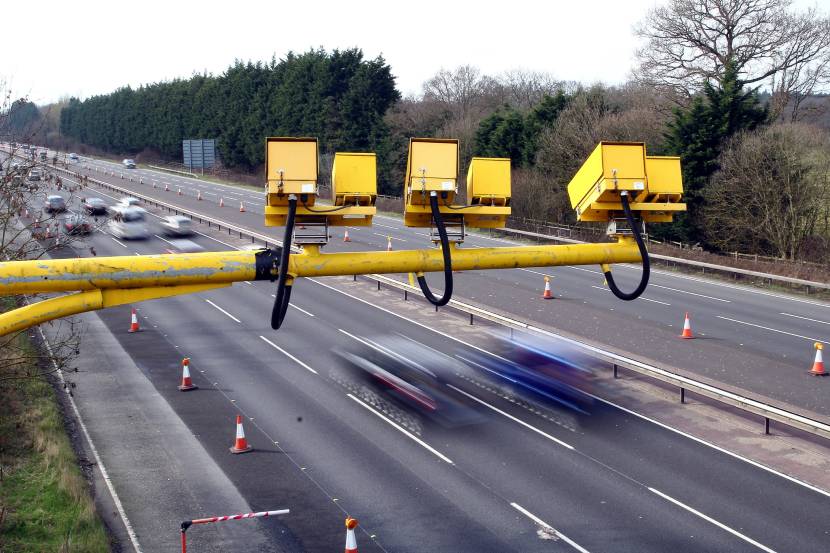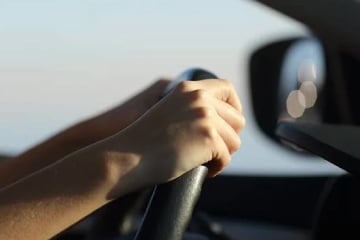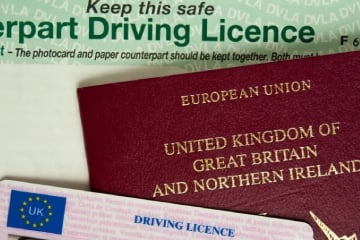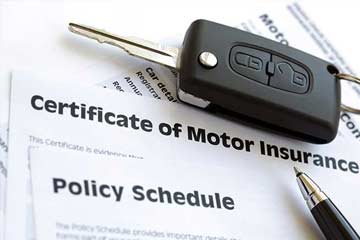In 2024, more than 205,000 drivers were found guilty of speeding, that’s 87% more than in 2011. At the same time, 1.84 million people took a speed awareness course - up 3% from the year before and 139% higher than in 2011.
So, where are the UK’s busiest speed cameras? How much leeway do you really get before getting fined? And could you land a £1,000 fine just for warning other drivers?
We’ve got the answers.

More than 9 million drivers have been caught in the past 3 years, with over 3.3 million Notices of Intended Prosecution (NIPs) issued in 2024 alone. That’s a 14% jump from 2022, making it the highest total in recent years.
So, what’s driving all this speeding?
- 31% say they didn’t realise they were going too fast.
- 40% were rushing or running late.
- 46% admit they’d speed in an emergency.
- And 1 in 5 (20%) do it just to overtake.
Still, it’s not all bad news. Half of drivers (50%) say they slow down near schools and homes, and more than a quarter (26%) believe lower speed limits would make roads safer. Another 28% want clearer camera signage to help them stay within the limit. So where are the most prolific speed cameras? And what are the speed camera rules?
As well as our own research, we spoke to GoSafe to help put an end to the confusion.
Where are the most prolific speed cameras?
We looked at speed cameras in the UK to see which ones are the best at catching people speeding.
Our data revealed that cameras on the A40 in North-West London have caught 50,000 speeding drivers in the last financial year alone.
As you might expect, speed cameras on motorways like the M4, M5 and M6 have also caught many motorists breaking the law.
| Site | No. of intended prosecutions | Police Constabulary |
|---|---|---|
|
A40 between Long Dr and Wellands Gdns E/B
|
49,050
|
Metropolitan
|
|
M25 Junction 7-16, Surrey
|
23,134
|
Surrey
|
|
M4 Junction 20-19, Bristol
|
18,317
|
Avon & Somerset
|
|
A5460 Narborough Road, Leicester, Jnc with Fullhurst Avenue
|
16,634
|
Leicestershire
|
|
M6 Junction 1-4 (Northbound and Southbound)
|
15,410
|
Warwickshire
|
|
Garston Way/ Dock Road, Liverpool
|
15,295
|
Merseyside
|
|
M5 Junction 4a-6, Birmingham
|
15,062
|
West Mercia
|
|
A282 Dartford Tunnel Approach Road
|
14,423
|
Kent
|
|
Lewes Road, Brighton, Jnc with Coldean Lane
|
14,172
|
Sussex
|
|
M6 Junction 7 & 8 N/B, Birmingham
|
12,762
|
West Midlands
|
Is there a tolerance on speed cameras?
Some drivers might not be aware, but most speed cameras have a tolerance of 10% + 2 mph.
For example, if a driver’s speed goes over 30 mph, they might not get a fine unless they reach 35 mph.
This is mainly to accommodate different types of speed and traffic cameras. For example, speed cameras, speedometers and portable speed meters.
The tolerances are also there to allow for driver safety. You could miss a hazard if you're looking at your speedometer.
Go safe says: The speed limit is the maximum speed – it’s not a target speed.
When safety camera programmes came about, GoSafe adopted the NPCC guidelines:
"This takes into consideration any variances in speedometers. This doesn't apply to police officers – they can enforce at different levels."
| Speed limit | Lower threshold | Speed awareness course up to: |
|---|---|---|
|
20 mph
|
24 mph
|
31 mph
|
|
30 mph
|
35 mph
|
42 mph
|
|
40 mph
|
46 mph
|
53 mph
|
|
50 mph
|
57 mph
|
64 mph
|
|
60 mph
|
68 mph
|
75 mph
|
|
70 mph
|
79 mph
|
86 mph
|
Is there an automatic ban on certain speeds above the limit?
Usually, there’s not an automatic ban if you exceed the speed limit by a certain speed. But it doesn’t mean that you can’t get a ban.
It all depends on the circumstances in which you were caught speeding.
Go safe says:
"It’s commonplace for people to lose their licence when their speed is double or over 100 mph on a motorway.
"It all depends on the circumstances. That’s at the discretion of the court hearing the case."
To see the sentencing guidelines on speeding, visit the Sentencing Council website.
Are speed awareness courses noted on your licence?
Speed awareness courses aren’t recorded on your driving licence record. But the National (UK) Driver Offender Retraining Scheme database keeps a record.
Go safe says that "This is to assess your eligibility for courses in future, which looks at whether you re-offend within three years."
If you take a speed awareness course, you don’t accept the usual points or the fine that goes along with it.
So it might mean that your car insurance costs don’t increase as a result. But multiple factors could affect your car insurance - so this isn’t a guarantee.
What happens if I don’t attend my speed awareness course?
If you don’t go to your speed awareness course, the police should be informed. Then it’s likely you get the points on your licence and the accompanying fine. You might even have to go to court.
It’s worth making every effort to attend. You could end up with penalty points on your licence for between 4 and 11 years, depending on the severity of the offence. And you’d have to pay the fine.
If you can’t get to the speed awareness course due to health reasons, you should get in touch with the course provider. You might be able to rebook, but this could come at a cost.
Go Safe recommends checking all the terms and conditions on the course to make sure you can reschedule.
What happens if I’m caught speeding after attending a speed awareness course?
You can only take a single speed awareness course in a 3-year period. If you’re caught again within this time, you're likely to get a fixed penalty and points on your licence.
You might have to go to court or you could be banned from driving too, depending on the severity of the offence.
Do speed cameras need speed camera warning signs?
It’s not a legal requirement to warn you if there’s a speed camera ahead.
In fact, mobile speed camera operators could technically choose to operate in an unmarked vehicle with no speed camera sign. But often, the sign is a deterrent in itself.
For stationary speed cameras you usually see signage, but this isn’t mandatory. You could still be charged for speeding even if there are no speed camera warning signs.
Go safe says:
"You can see safety camera signs on routes leading to sites where fixed cameras operate.
"This isn't a legal requirement. The mobile sites operated by GoSafe have no requirement to have a camera warning sign."
If you’re confused about what the speed limit is, keep an eye out for speed limit signs or street lighting to show the maximum speed.
Street lighting usually indicates that the speed is 30 mph. But the absence of a camera sign doesn't make it okay to speed.
What are the rules around warning other drivers of a speed camera?
GoSafe says flashing your lights to warn others about a speed camera could be seen as obstructing the police. If you're caught, the court may consider:
- Was there any obstruction of a constable?
- Was the constable acting lawfully at the time?
- Was the obstruction intentional?
The reality is, while many drivers still flash their lights out of habit or courtesy, it could land you in hot water, especially if you’re seen interfering with police work.
Can I be fined for warning other drivers about speed cameras?
Yes and it could cost you up to £1,000.
Under Section 89(2) of the Police Act 1996, it’s an offence to wilfully obstruct a constable in the execution of their duty. According to the Crown Prosecution Service (CPS), warning others about a police speed trap counts as obstruction.
This is a summary-only offence, with a maximum penalty of one month’s imprisonment and/or a Level 3 fine (up to £1,000).
And it’s not just flashing headlights. Posting or sharing camera locations on social media or in traffic groups could also be considered obstruction.
One driver learned this the hard way in 2019 when he waved at passing cars to warn them of a mobile speed camera, accidentally flagging down an unmarked police car. He was reported for obstruction on the spot.
Is it possible to drive fast enough that you don’t set off a speed camera?
No. Cameras can detect all speeds - there’s no exception for excessive speeds.
Go Safe says:
"There are many cases where cameras have caught vehicles speeding at excessive speeds. One example is a supercar that was recorded travelling through Texas at 242 mph."
Can you be penalised for driving too slowly?
You can be penalised for driving too slowly as it could cause other driving offences. Section 3 of the Road Traffic Act 1988 says:
“If a person drives a mechanically-propelled vehicle on a road or other public place without due care and attention, or without reasonable consideration for other persons using the road or place, he [sic] is guilty of an offence.”
The ‘reasonable consideration’ part is something that the court decides on based on the evidence.
So, if you were going too slow you could cause tailbacks, ill-judged overtaking and you might not merge onto the motorway properly. If there was an accident as a result of this, you could be taken to court or fined.
Go safe says that Section 3 of the Road Traffic Act 1988 could also apply to:
- Leaving an indicator on too long to give a misleading signal
- A bus driver taking a corner so fast that passengers are thrown out of their seats and injured
What are the speed camera rules?
There’s guidance around speed cameras for their positioning and their appearance. The guidelines from the Department for Transport says:
- Speed cameras must sit in a yellow housing
- The housing itself should be visible and not obscured by trees or bushes
- You should be able to see the speed camera from 60 metres away in a 40 mph zone, or 100 metres for all other zones
- Signs should be placed in areas where there are visible camera housings - but this isn’t mandatory
- Every camera site should be reviewed every 6 months. This is to make sure they’re visible and properly signposted
Remember, if you’re caught by a camera that doesn’t meet these conditions, you can’t use it as a defence. You could get fines and penalty points even if the speed camera doesn’t meet these conditions.
What happens if I’m caught speeding after attending a speed awareness course?
Mobile speed cameras are usually run by local police forces and positioned in places where there’s been a history of road traffic incidents. Like any other speed camera, they catch you if you break the speed limit.
Mobile speed cameras also have guidelines on their positioning and appearance:
- Mobile speed camera operators should be visible and wearing fluorescent clothing. Their vehicles should be marked with reflective strips too
- Signs should be placed in areas where mobile cameras are operating - but this isn’t mandatory
- Like the speed cameras, every mobile speed camera site should be reviewed every 6 months
Again, if a mobile speed camera doesn’t meet these rules, you won’t be able to use this as a defence.
What happens if you get multiple speeding tickets on the same road?
It’s not impossible to get a speeding ticket multiple times on the same road, for example on the motorway.
Depending on the severity, you could end up with 2 sets of points of your licence and a speeding fine. All of these could add up to a driving ban and potentially increase your car insurance costs.







